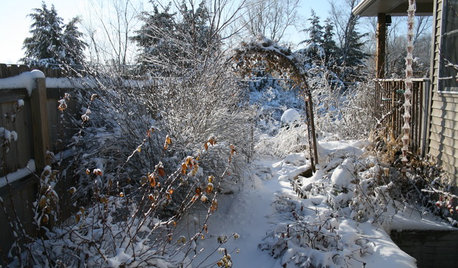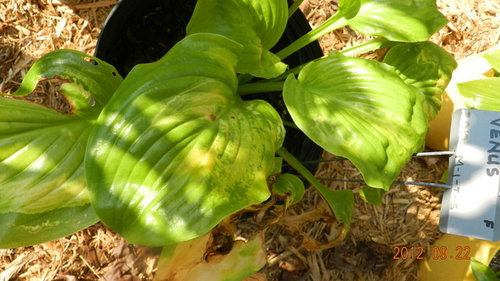H. 'Venus' looking weird
User
11 years ago
Related Stories

EVENTSOn Show: Weird, Wondrous Science Meets Design
Houses grown, not built. Power-generating soil. And snail poop that ... well, see for yourself in our coverage of a new Rotterdam exhibit
Full Story
REMODELING GUIDESGet the Look of a Built-in Fridge for Less
So you want a flush refrigerator but aren’t flush with funds. We’ve got just the workaround for you
Full Story
HOUZZ TOURSMy Houzz: Vintage Treasures Adorn a Faded Beauty
A designer brings a bold vision and love of the weird and wonderful to a 110-year-old Australian house
Full Story
DECORATING GUIDES12 Ways to Work With Rugs for Warmth and Beauty
Try these ideas for rug placement, style and size for a pulled-together look and a great feel underfoot
Full Story
BATHROOM DESIGNWhite Toilet, Black Lid: Trending in a Bathroom Near You
Contrast is king with this look for the bath — and it works with any style you can think of
Full Story
KITCHEN DESIGNThe Future of Backsplashes
Grout is out. Continuous sheets of glass, stone, metal and porcelain are saving cleaning time and offering more looks than ever
Full Story
KITCHEN DESIGNA Modern Kitchen Inspired by Edwardian Style
Attention to detail and functionality make for a kitchen that is as beautiful to work in as it is to look at
Full Story
LIFE6 Ways to Beat the Winter Blahs
Snow and dark days dampening your spirits? These ideas will have you looking on the bright side
Full Story
COLORBedroom Color: The Secret to More Sex and More Sleep
Look to surprising revelations about bedroom wall colors to get more of what you want
Full Story
DECORATING GUIDESGo Crazy With Your Decorating — You'll Fit Right In
Trending in home looks everywhere: boldness and individuality. Get the scoop and see some adventurous examples here
Full Story









UserOriginal Author
UserOriginal Author
Related Professionals
Clark Landscape Architects & Landscape Designers · Ferndale Landscape Architects & Landscape Designers · Woburn Landscape Contractors · Allentown Landscape Contractors · Maple Valley Landscape Contractors · Fort Mill Landscape Contractors · Natick Landscape Contractors · Rockwall Landscape Contractors · Tavares Landscape Contractors · Brushy Creek Fence Contractors · Homestead Fence Contractors · League City Fence Contractors · Leesburg Fence Contractors · Parkway Fence Contractors · South Whittier Solar Energy SystemsSteve Massachusetts
Jon 6a SE MA
hostaLes
Jon 6a SE MA
Jon 6a SE MA
UserOriginal Author
Jon 6a SE MA
Gesila
UserOriginal Author
UserOriginal Author
Josh Spece
Pieter zone 7/8 B.C.
Steve Massachusetts
UserOriginal Author
gardenfanatic2003
UserOriginal Author
mortko
Lykaon - Ohio Zone 6a
Babka NorCal 9b
mortko
UserOriginal Author
ctopher_mi
trudy_gw
ctopher_mi
trudy_gw